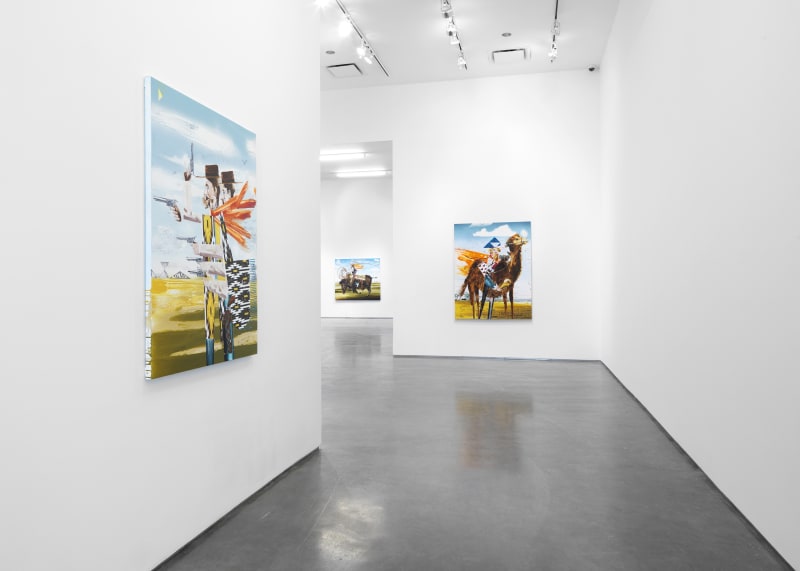BY DANIEL CREAHAN
Barnaby Furnas returns to Marianne Boesky Gallery this month, opening his seventh exhibition with the gallery with an act of both reflective meditation and an unflinching eye on the present. Bearing the title Frontier Ballads, Furnas’s work is a sort of inverted nostalgia, recalling the golden age of the American West, and the political analogs of this era that seem to echo forth in the current wave of populist politics in the United States.
Furnas’s new paintings are created through his characteristic play with figuration and abstraction. Lines, color blocks, geometric shapes, and pools of paint at once fragment and build into the flurries of visceral energy and poetic movement across the canvas that have become his signature. His figures are blurs of motion, drawing their kaleidoscope-like gestures and sensuous colors into a more striking exchange with the subject matter itself. The effect of this technique are works that surge out of easy readings of figuration, so closely tied to the body, yet twisted away from straightforward depictions by their multi-textured collages and fusions of texture. Images negotiate between pools of color and sharp stabs of the brush, often in the space of a few inches, a mode of construction that offers a certain degree of distance from the image as picture.
Yet it’s what the artist does with these images that makes his show so striking. Moving between images of gun-slinging, cattle-wrangling cowboys, singing choruses of milk maids and more modern images, Furnas twists an iconography of the American West into both a contemporary framework and a reflective echo of the past. Building up the language of this series, his depiction of what is ostensibly Donald Trump, placed atop a podium reminiscent of frontier demagogues, the artist’s work makes its rhetorical argument felt most explicitly. It’s the politician’s poise atop the political stage, arm gesticulating wildly in Furnas’s signature style that underscores the parallel between iconographies here, and which animates the rest of the work with a certain sinister undertone. With the warlike undertones of the flying jets and smoky, clouded skies of other works, his images of cowboys and farm hands take on a darker note, their ghostly pale skin and wide black eyes tainted with a sense of death and decay.
Furnas walks a subtle critical line here, managing somehow to work closely with the material of the American mythos, while using his style to delicately twist and challenge the viewer’s internalized assumptions about this vocabulary. Moving between a broad range of symbols and signifiers, each united by his vivid style, Furnas paints a picture of the American identity between easily read timelines and spaces, ultimately touching something just out of reach in our own psyches.


